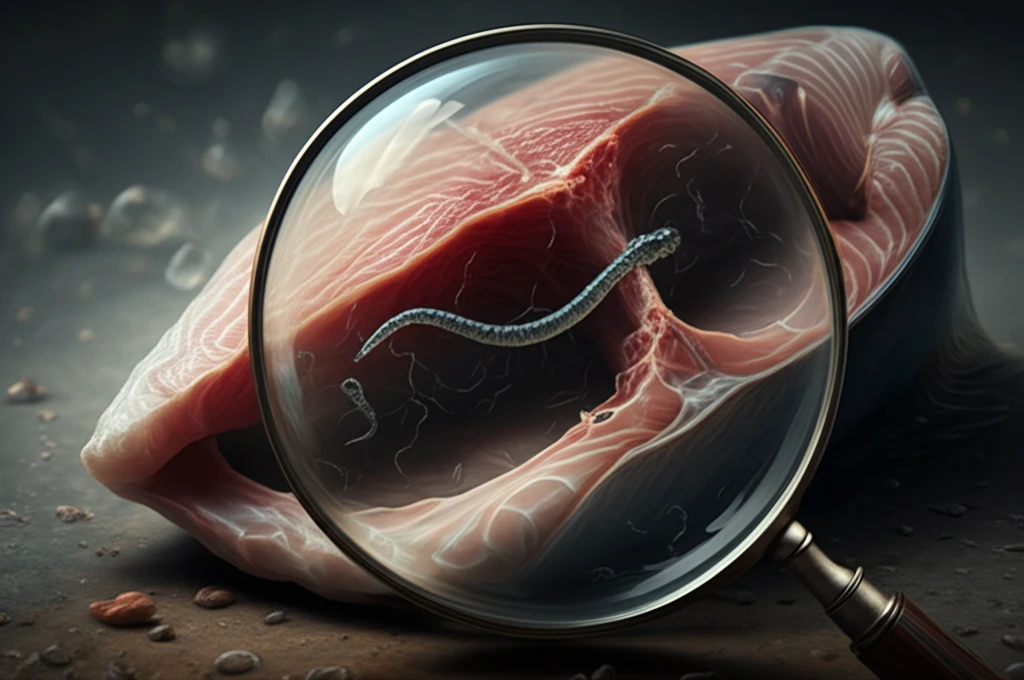
Don't Let Dinner Bite Back: Understanding and Avoiding Anisakis in Your Fish
"A deep dive into Anisakis, prevalence in seafood, and how to protect yourself from this sneaky parasite, so that you can enjoy the benefits of seafood without worrying about safety."
Imagine preparing a delicious seafood dinner, only to discover that your meal might contain unwanted guests: Anisakis larvae. These tiny parasites are the culprits behind anisakiasis, a gastrointestinal ailment contracted by consuming raw or undercooked fish. While the thought might make your skin crawl, understanding the risks and taking preventive measures can ensure your seafood experiences remain enjoyable and safe.
Anisakiasis isn't just a minor inconvenience. It presents with symptoms like abdominal pain, diarrhea, nausea, and vomiting. In some cases, it can trigger severe allergic reactions, including anaphylactic shock. Given the rising popularity of raw fish dishes like sushi and ceviche, it's crucial to be aware of where these parasites lurk and how to neutralize them.
This article delves into the world of Anisakis, exploring its prevalence in various fish species, particularly those marketed in the Mediterranean and Atlantic regions. We'll break down the findings of a recent study conducted in Sardinia, Italy, offering practical insights and actionable steps to protect yourself and your family from anisakiasis.
Decoding the Anisakis Threat: What the Science Says

A comprehensive study conducted between January and December 2013 scrutinized 1,112 specimens from four common commercial fish species—anchovies (Engraulis encrasicolus), hake (Merluccius merluccius), Atlantic mackerel (Scomber colias), and Mediterranean horse mackerel (Trachurus mediterraneus). These samples, sourced from Sardinian markets, underwent rigorous examination to detect the presence of Anisakis larvae.
- Species Matters: The type of fish significantly impacts your risk. Atlantic mackerel had the highest infection rate in the study.
- Location, Location, Location: Fish from different regions carry different parasites. Mediterranean fish predominantly host A. pegreffii, whereas Atlantic fish may contain A. simplex.
- Size Counts: Larger fish tend to have more parasites, particularly in anchovies and Atlantic hake.
- Where They Hide: Anisakis larvae are more commonly found in the body cavity than in the muscle, though muscle contamination does occur.
Protecting Yourself: Practical Steps for Safe Seafood Consumption
Given the potential risks, what can you do to ensure your seafood is safe to eat? Fortunately, effective preventive measures can significantly reduce the risk of anisakiasis. Visual inspection alone isn't foolproof, as it only detects about half of the parasites. Therefore, combining inspection with proper cooking or freezing is essential for maximum protection. By taking these precautions, you can continue to enjoy the nutritional benefits of fish without undue worry.
